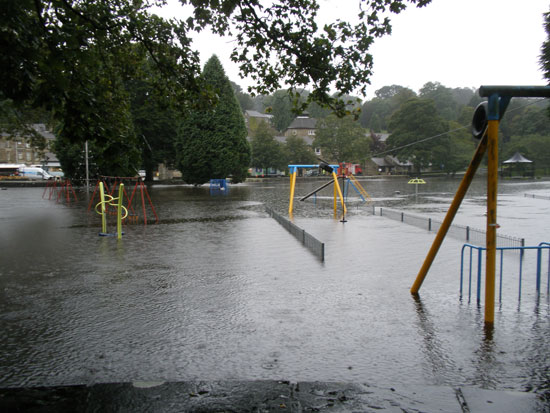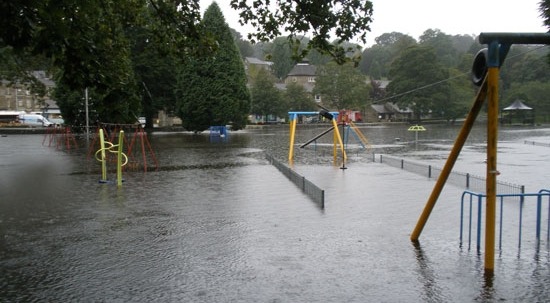 Despite some of the worst flooding for ten years North Yorkshire County Council is taking every step to make sure that our residents are safe and able to access vital services as usual.
Despite some of the worst flooding for ten years North Yorkshire County Council is taking every step to make sure that our residents are safe and able to access vital services as usual.
As part of a multi-agency effort, the county council’s teams have been working around the clock across affected areas of the county to ensure that any disruption to services is kept at an absolute minimum across our communities.
Any schools that were closed at the beginning of the week due to flooding have now re-opened or have been temporarily relocated so that children’s education can continue.
The county council’s Health and Adult Service is working closely with the district councils, private domiciliary care agencies, vulnerable adults and their families so that people continue to be well cared for. Teams have carried out several successful evacuations of vulnerable residents in flooded areas and remain on standby so that all those in need of help during the crisis will receive it.
County council teams have also been working with district council colleagues and the Environment Agency to take practical steps to alleviate the effects of flooding and protect homes and businesses and residents as far as possible. For example, we have monitored water levels around the clock and filled and positioned sandbags in areas of major flooding and where flood defences were threatened. In Selby 13,000 bags were filled with sand and stacked on pallets for quick despatch if required.
Highways teams have fully re-opened in the region of forty roads that were closed or passable only with care and the bridge that carries the A684 at Morton-on-Swale is also now open. Despite the extensive flooding in some areas the county council is making every effort to keep transport routes moving.
For example, highways teams are installing a temporary bridge at Scorton near Richmond on the B1263 after the bridge was swept away by flood water. The county council is also providing a free shuttle bus service to connect the two sides of Tadcaster until water levels drop sufficiently so that the bridge can be given a thorough structural inspection. Annual maintenance on the Selby by-pass swing bridge has also been postponed for one week so that the bridge can remain open to traffic this weekend because of the ongoing disruption on the network.
Some bridges, however, remain closed until water levels drop and they can be fully inspected for any structural damage. A specialist diving team has been brought into the county today ready to check for structural damage on some key bridges below the waterline when possible. However, some of the rivers are still high, murky and fast-flowing and this will not be possible in every case. The A61 at Skipton-on Swale and the bridge that crosses the River Ure at Boroughbridge, as well as the swing bridge at Cawood remain closed and people are urged not to try to cross them; but they remain a priority for the highways team.
County Councillor John Weighell, North Yorkshire’s Leader said:
We have made every effort to protect residents in affected areas and to maintain our services and we will continue to do so until the flood waters fully subside.
We would like to extend our thanks to our communities and volunteers across the county who have helped with practical issues such as sandbagging and have kept a watchful eye on vulnerable neighbours.
North Yorkshire is a resilient county and we are proud that people who live here are more than willing to pull together and help each other out when necessary.
County Council have issued the following advice for clearing up after a flood
There are a number of things to be aware of when clearing up after a flood.
- Flood water can contain sewage, chemicals and animal waste. Always wear:
- If you find animal carcasses on your land after the floods have receded you can contact the county council’s dedicated animal health and welfare helpline 0845 3301221
- If your electricity supply is not already switched off at the mains, get a qualified person to do this. DO NOT touch sources of electricity when standing in flood water.
- If you have gas or oil central heating and it has been checked by an engineer, turn it on. Keep the thermostat between 20-22 degrees centigrade for steady drying.
- You can get water out of your property using a pump and generator. Position the generator outside in the open air as generators produce carbon monoxide fumes which can kill.
- Only pump out water when flood levels outside your property start to be lower than inside. This reduces the risk of structural damage.
- Shovel mud away evenly from both sides of a wall. This stops pressure building up on one side.
- You can clean and disinfect your property using ordinary household products.
- A garden hose is useful for washing down. Do not use high-pressure hoses as they blast contaminated matter into the air.
- If you are drying your property naturally, keep doors and windows open as much as possible. If using dehumidifiers, close external doors and windows.
- Contact your council about skips and extra rubbish collections for items that your insurance company has agreed you can throw away.
- If you need building work undertaken post-flood try to avoid cold callers.
- If you have complaints about standards of building work or are worried about cold callers, contact the Citizen’s Advice helpline 08454 040506
If people have any concerns with issues related to the flooding they can contact the county council’s customer service centre on 0845 872 7374







